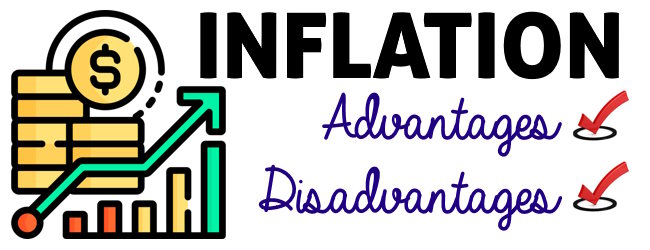Advantages and Disadvantages Of Inflation

Inflation, the rate at which the general level of prices for goods and services is rising, has both advantages and disadvantages. Here are some of them:
Advantages of Inflation:
-
Encourages Spending and Investment:
- Mild inflation can encourage consumers to spend and invest rather than hoard money. When people expect prices to rise, they are more likely to spend and invest, which can stimulate economic growth.
-
Debt Relief:
- Inflation can erode the real value of debt. Borrowers benefit because they can repay loans with money that is less valuable than when they borrowed it. This is particularly advantageous for those with fixed-rate loans.
-
Stimulates Economic Growth:
- Inflation can be a sign of a growing economy. As demand for goods and services increases, businesses expand to meet that demand, leading to job creation and overall economic growth.
-
Nominal Wage Increases:
- In an inflationary environment, nominal wages (the actual dollars you earn) may increase, even if real wages (adjusted for inflation) stay the same. This can create a perception of higher income and boost morale.
Disadvantages of Inflation:
-
Reduced Purchasing Power:
- Inflation erodes the purchasing power of money. As prices rise, the same amount of money buys fewer goods and services. This can hurt people on fixed incomes, savers, and those with limited resources.
-
Uncertainty and Distorted Price Signals:
- High or unpredictable inflation can create uncertainty in the economy. Businesses may find it challenging to plan for the future, and consumers may hesitate to make long-term commitments. Distorted price signals can also lead to inefficient resource allocation.
-
Menu Costs:
- Businesses incur costs in adjusting their prices to keep up with inflation. These costs, known as "menu costs," include the expenses associated with changing price tags, updating catalogs, and adjusting computer systems.
-
Savers and Fixed-Income Earners Lose:
- Savers lose out when the interest rates on savings accounts don't keep up with inflation. Fixed-income earners, such as retirees living on a fixed pension, may find it challenging to maintain their standard of living.
-
Interest Rate Challenges:
- Central banks may need to raise interest rates to combat high inflation, which can lead to higher borrowing costs. This can be a challenge for businesses and individuals who rely on borrowing for investment and consumption.
-
Distorted Investment Decisions:
- High inflation can distort investment decisions, as investors may prioritize assets that appreciate in value faster than the inflation rate rather than those with the best underlying economic fundamentals.
It's important to note that the impact of inflation can vary depending on its level, duration, and how well it is anticipated by economic agents. Moderate and stable inflation is generally considered more favorable than high or unpredictable inflation. Central banks often aim for a target inflation rate to balance these factors.
Thank you.
